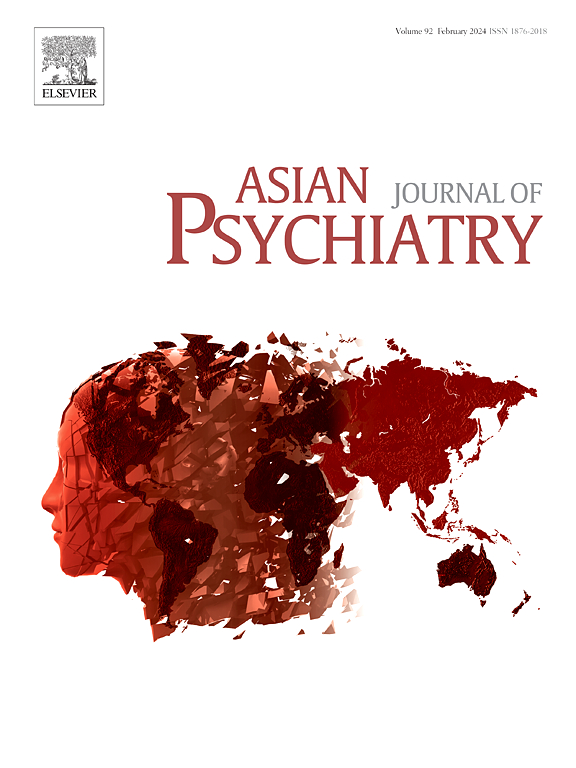调查老年人抑郁症的内在和情景预测因素:对 CHARLS 数据库的分析。
IF 3.8
4区 医学
Q1 PSYCHIATRY
引用次数: 0
摘要
研究背景本研究旨在探讨健康生态模型下抑郁症的内在和情景预测因素:从 CHARLS 收集了两波(2011 年和 2013 年)调查数据。共纳入5845名老年人(≧60岁),抑郁定义为CESD-10得分≧10。利用随机森林结合可解释的方法来选择抑郁症的重要预测因素。采用多层次逻辑模型检验内在和情境预测因素与抑郁的关联:经过两年的跟踪调查,有 1822 人(31.17%)患上了抑郁症。可解释性分析表明,内在变量和情境变量均可预测抑郁症。多层对数模型显示,年龄、性别、慢性病数量、疼痛部位数量、生活满意度和厕所距离与抑郁症有显著相关性:结论:研究发现,内在因素和情境因素都与社区老年人口中的抑郁症有关,这从公共卫生的角度强调了其早期预防的重要性。本文章由计算机程序翻译,如有差异,请以英文原文为准。
Investigating intrinsic and situational predictors of depression among older adults: An analysis of the CHARLS database
Background
This study aimed to investigate the intrinsic and situational predictors of depression under the health ecological model.
Methods
Two waves (2011 and 2013) of survey data were collected from the CHARLS. A total of 5845 older adults (≧60) were included, and depression was defined as CESD-10 score ≧10. Random forest combined with interpretable methods were utilized to select important predictors of depression. Multilevel logit model was used to examine the associations of intrinsic and situational predictors with depression.
Results
After a 2-year follow up, 1822 individuals (31.17 %) developed depression. Interpretable analyses showed that both intrinsic and situational variables were predictive for depression. Multilevel logit model showed that age, gender, number of chronic diseases, number of pain areas, life satisfaction, and toilet distance were significantly associated with depression.
Conclusion
Both intrinsic and situational factors were found to be associated with depression among community older population, highlighting their significance for early prevention from the perspective of public health.
求助全文
通过发布文献求助,成功后即可免费获取论文全文。
去求助
来源期刊

Asian journal of psychiatry
Medicine-Psychiatry and Mental Health
CiteScore
12.70
自引率
5.30%
发文量
297
审稿时长
35 days
期刊介绍:
The Asian Journal of Psychiatry serves as a comprehensive resource for psychiatrists, mental health clinicians, neurologists, physicians, mental health students, and policymakers. Its goal is to facilitate the exchange of research findings and clinical practices between Asia and the global community. The journal focuses on psychiatric research relevant to Asia, covering preclinical, clinical, service system, and policy development topics. It also highlights the socio-cultural diversity of the region in relation to mental health.
 求助内容:
求助内容: 应助结果提醒方式:
应助结果提醒方式:


